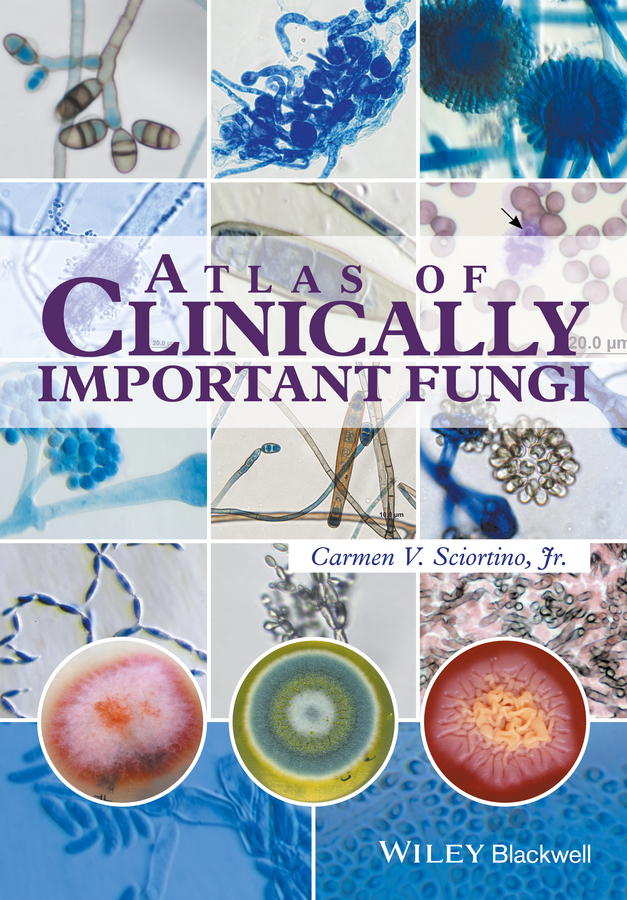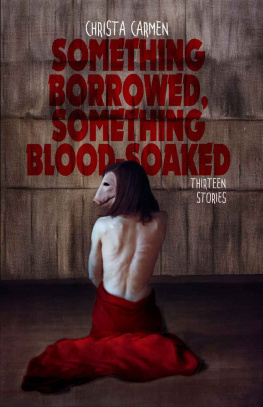Carmen V. Sciortino - Atlas of Clinically Important Fungi
Here you can read online Carmen V. Sciortino - Atlas of Clinically Important Fungi full text of the book (entire story) in english for free. Download pdf and epub, get meaning, cover and reviews about this ebook. year: 2017, genre: Home and family. Description of the work, (preface) as well as reviews are available. Best literature library LitArk.com created for fans of good reading and offers a wide selection of genres:
Romance novel
Science fiction
Adventure
Detective
Science
History
Home and family
Prose
Art
Politics
Computer
Non-fiction
Religion
Business
Children
Humor
Choose a favorite category and find really read worthwhile books. Enjoy immersion in the world of imagination, feel the emotions of the characters or learn something new for yourself, make an fascinating discovery.

- Book:Atlas of Clinically Important Fungi
- Author:
- Genre:
- Year:2017
- Rating:5 / 5
- Favourites:Add to favourites
- Your mark:
- 100
- 1
- 2
- 3
- 4
- 5
Atlas of Clinically Important Fungi: summary, description and annotation
We offer to read an annotation, description, summary or preface (depends on what the author of the book "Atlas of Clinically Important Fungi" wrote himself). If you haven't found the necessary information about the book — write in the comments, we will try to find it.
Atlas of Clinically Important Fungi — read online for free the complete book (whole text) full work
Below is the text of the book, divided by pages. System saving the place of the last page read, allows you to conveniently read the book "Atlas of Clinically Important Fungi" online for free, without having to search again every time where you left off. Put a bookmark, and you can go to the page where you finished reading at any time.
Font size:
Interval:
Bookmark:

- Chapter 04
- Chapter 05
- Chapter 06
- Chapter 07
- Chapter 08
- Chapter 09
Carmen V. Sciortino, Jr.
Division of Infectious Diseases
University of Louisville School of Medicine, and
Robley Rex Veterans Healthcare Medical Center
Louisville, kentucky, USA

Copyright 2017 by John Wiley & Sons, Inc. All rights reserved
Published by John Wiley & Sons, Inc., Hoboken, New Jersey
Published simultaneously in Canada
No part of this publication may be reproduced, stored in a retrieval system, or transmitted in any form or by any means, electronic, mechanical, photocopying, recording, scanning, or otherwise, except as permitted under Section 107 or 108 of the 1976 United States Copyright Act, without either the prior written permission of the Publisher, or authorization through payment of the appropriate percopy fee to the Copyright Clearance Center, Inc., 222 Rosewood Drive, Danvers, MA 01923, (978) 7508400, fax (978) 7504470, or on the web at www.copyright.com. Requests to the Publisher for permission should be addressed to the Permissions Department, John Wiley & Sons, Inc., 111 River Street, Hoboken, NJ 07030, (201) 7486011, fax (201) 7486008, or online at http://www.wiley.com/go/permissions.
Limit of Liability/Disclaimer of Warranty: While the publisher and author have used their best efforts in preparing this book, they make no representations or warranties with respect to the accuracy or completeness of the contents of this book and specifically disclaim any implied warranties of merchantability or fitness for a particular purpose. No warranty may be created or extended by sales representatives or written sales materials. The advice and strategies contained herein may not be suitable for your situation. You should consult with a professional where appropriate. Neither the publisher nor author shall be liable for any loss of profit or any other commercial damages, including but not limited to special, incidental, consequential, or other damages.
For general information on our other products and services or for technical support, please contact our Customer Care Department within the United States at (800) 7622974, outside the United States at (317) 5723993 or fax (317) 5724002.
Wiley also publishes its books in a variety of electronic formats. Some content that appears in print may not be available in electronic formats. For more information about Wiley products, visit our web site at www.wiley.com.
Library of Congress CataloginginPublication Data
Names: Sciortino, Carmen V., Jr., 1953
Title: Atlas of clinically important fungi / Carmen V. Sciortino, Jr.
Description: Hoboken, New Jersey : John Wiley & Sons, Inc., [2017] | Includes bibliographical references and index.
Identifiers: LCCN 2016036788 (print) | LCCN 2016046904 (ebook) | ISBN 9781119069669 (cloth) | ISBN 9781119069676 (pdf) | ISBN 9781119069683 (epub)
Subjects: LCSH: FungiIdentification. | FungiAtlases. | Materia medica, VegetableAtlases.
Classification: LCC QK603 .S344 2017 (print) | LCC QK603 (ebook) | DDC 579.5dc23
LC record available at https://lccn.loc.gov/2016036788
This book is dedicated in loving memory of my Father and to the many other War Veterans that served our country.
Although there are many texts that provide quality information for the identification of fungi, I have found that medical technologists rarely have time to read the text. Hence, most are rushed and seek morphological information that helps guide them to the identification of fungi. In other words, one picture is worth a thousand words. This atlas is a reference for those who have a basic understanding of mycology and wish to identify an organism with just culture morphology and a lactophenol cotton blue (LPCB) stain. It is written in simplified, common terms rather than in strict mycological terms to avoid the need to consult a glossary.
I have attempted to show many photographs without extensive morphological descriptions. Photographs show most structures that the technologist can correlate with their own preparations. For this reason, numerous color photographs are included so that technologists will have sufficient reference photos for identifying the various morphologies of a single organism. Organism photographs begin with the macroscopic colony views followed by the microscopic views. Also included for some microorganisms are clinical pathology photographs demonstrating how the organism appears in human tissues.
Special thanks go to James Jim Lay, Mary Kemper, Karen Petach, Gerald Doug Thompson, Derli Yung, Mark Constant, Kimberly Pittman, Mark Heckman, and Charles Chuck Cornett, a great team to work with over the years. James Jim Snyder is much appreciated for providing several of the fungal isolates and his valuable consultations. A special thanks to the pathologists, Larry Rubel and Saad Shaheen, for their consultations. The University of Texas Health Science Center Fungus Testing Laboratory, San Antonio, TX, kindly provided the Conidiobolus isolate from Dr M. Kimuras laboratory.
Divisions of the Fungi
Morphological Growth Index
Growth: slow, beginning glabrous, developing into fuzzy appearance in later culture. May also appear folded and convoluted, giving a molar toothlike colony.
Nocardia (white, pink to orange) (see figures in )
Rhodococcus equi (coral) (see figures in )
Streptomyces (white, cream, brown, black) (see figures in )
Rhodococcus equi (see figures in )
Nocardia (see figures in )
Candida species (see figures in )
Cryptococcus (see figures in ) (for further information see reference 64 in Additional Reading)
Pichia (Hansenula) anomala (see figures in )
Malassezia (see figures in ) (for further information see reference 65 in Additional Reading)
Trichosporon (see figures in ) (for further information see reference 63 in Additional Reading)
Prototheca Algae (see figures in )
Cryptococcus (yellow pigment on Sabouraud dextrose) (see figures in ) (for further information see reference 64 in Additional Reading)
Rhodotorula (pink or coral pigment) (see figures in )
Coccidioides immitis (see figures in ) (for further information see references 10 and 11 in Additional Reading)
Blastoschizomyces (see figures in ) (for further information see reference 61 in Additional Reading)
Next pageFont size:
Interval:
Bookmark:
Similar books «Atlas of Clinically Important Fungi»
Look at similar books to Atlas of Clinically Important Fungi. We have selected literature similar in name and meaning in the hope of providing readers with more options to find new, interesting, not yet read works.
Discussion, reviews of the book Atlas of Clinically Important Fungi and just readers' own opinions. Leave your comments, write what you think about the work, its meaning or the main characters. Specify what exactly you liked and what you didn't like, and why you think so.








